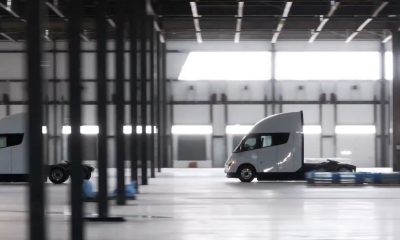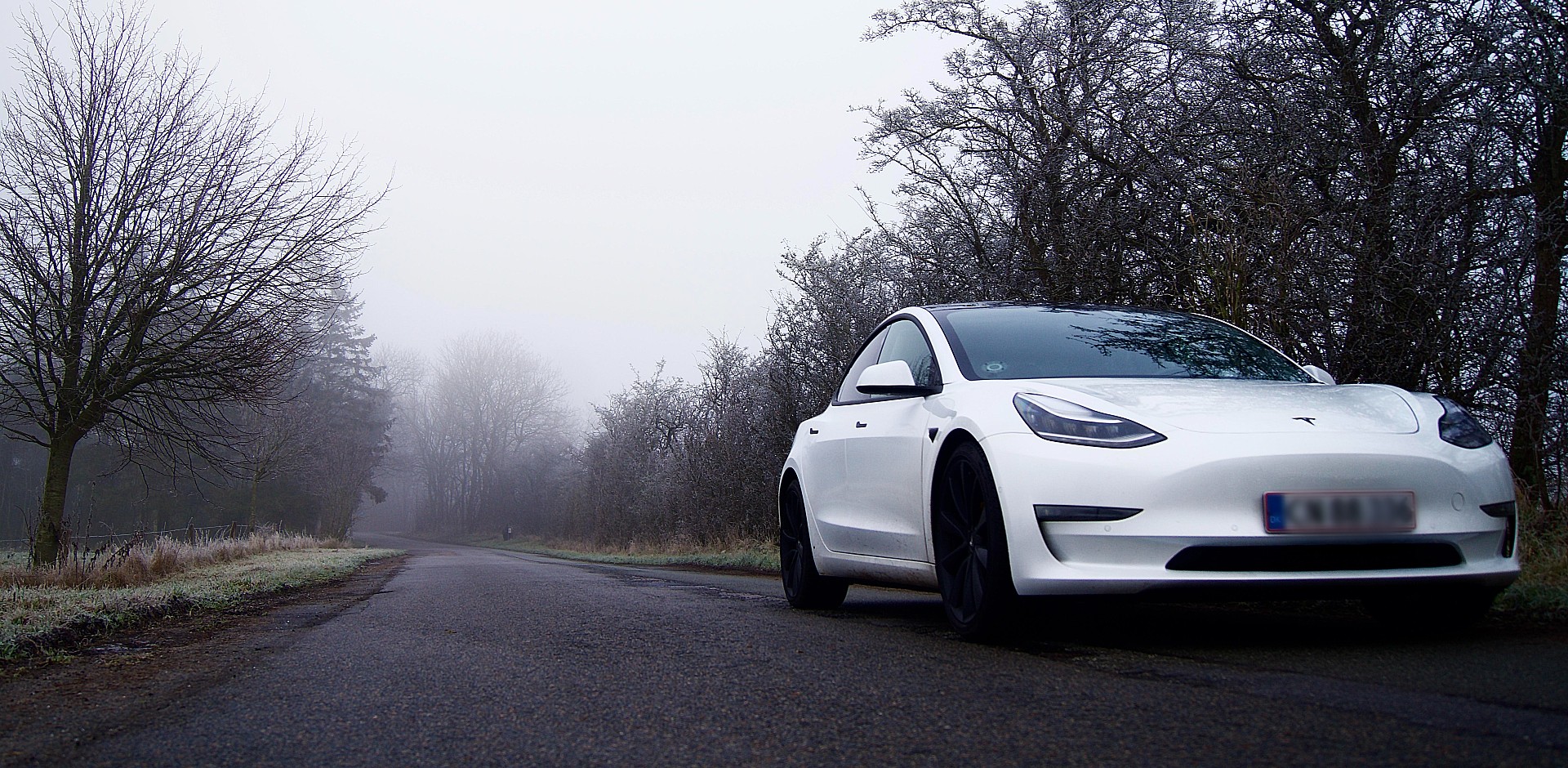

Lifestyle
Tesla’s $7,000 EV incentive is a nail in the coffin for ICE competitors
The reintroduction of the electric vehicle tax incentive credit could be a nail in the coffin to Tesla’s competitors as if the company needed any more help to bury its competitors into the ground officially.
Earlier this week, it was reported that Tesla could be primed to receive the new EV incentives that would grant a $7,000 tax credit to the first 600,000 Tesla EVs sold in the United States. The new GREEN Act indicates that the number of applicable EVs per manufacturer would increase by 400,000 cars, from 200,000 to 600,000, making a considerable number of Tesla’s projected sales for 2021 reasonably less expensive for car buyers.
While Tesla didn’t give an exact estimation for how many cars it plans to build this year, several analysts have projected numbers between 800,000 and 950,000. However, Tesla’s Q4 Earnings Update Letter has a total output of 1,050,000 between its two active production facilities.
Tesla to gain access to 400k more $7k EV tax credits amid Biden’s sustainability push
The GREEN Act states:
“The bill also extends existing tax incentives available for the sale of electric vehicles. The bill increases the electric vehicle credit cap for manufacturers to 600,000 vehicles, but reduces the credit by $500 after the first 200,000 vehicles sold. This would replace the current phaseout period that begins with 200,000 vehicles sold, with a phaseout period that instead begins during the second calendar quarter after the 600,000-vehicle threshold is reached.
“At the start of the new phaseout period created under the bill, the credit is reduced by 50 percent for one calendar quarter and subsequently ends. For manufacturers that already passed the 200,000 threshold before the enactment of the bill, the number of vehicles sold in between 200,000 and those sold on the date of enactment are excluded in determining when the 600,000 threshold is reached.”
Tesla is sitting pretty if this happens to go through. For several reasons, the reintroduction of the EV incentive to Tesla’s cars could effectively bury conventional automakers who have not put a more serious and specific focus on the development of electric powertrains.
It is no secret that the future of vehicles is electric. While classic muscle cars will likely always be in existence for decades to come, mass-market vehicles from other manufacturers, like Ford Escapes, Honda Civics, Toyota Camrys, and Chevy Malibus, will fade away. Let’s be honest with each other here: Nobody is collecting any of them; they just don’t have the “it” factor that a classic vehicle has.
This is a preview from our weekly newsletter. Each week I go ‘Beyond the News’ and handcraft a special edition that includes my thoughts on the biggest stories, why it matters, and how it could impact the future.
Even today’s Mustangs, Camaros, and Corvettes don’t hold the value, the sentimental meaning, or the history that early builds have. And even worse, they don’t have the performance, the speed, or the technology and efficiency that an electric car has. EVs are the best of both worlds, and when you buy a Tesla, there is no better car to display that in the most exaggerated manner.
Subtracting another $7,000 from the price of any of Tesla’s vehicles thanks to the GREEN Act would be game over. The Model 3 SR+ would be well below the average cost of a car in the United States today while offering environmentally-friendly transportation, acceleration that is well beyond the norm for a combustion engine car, and pricing that just cannot be matched by some of the “luxury, high-performance” vehicles that are offered in today’s market.
Comparative to the Tesla Model 3 SR+ is the 2021 Mercedes-Benz CLA-Class. Both start at price points slightly below $38,000, but the specs speak for themselves. The Model 3 has a significantly faster 0-60 time at 5.3 seconds, while the Benz sits at 6.2. The quarter-mile race wouldn’t be close either, with the CLA getting to the line in 13.8 seconds. The Model 3 would be finished in 13.1, according to Matthew Cjel, who did three 1/4-mile runs with his SR+ and got times of 13.185, 13.181, and 13.218.
CarBuzz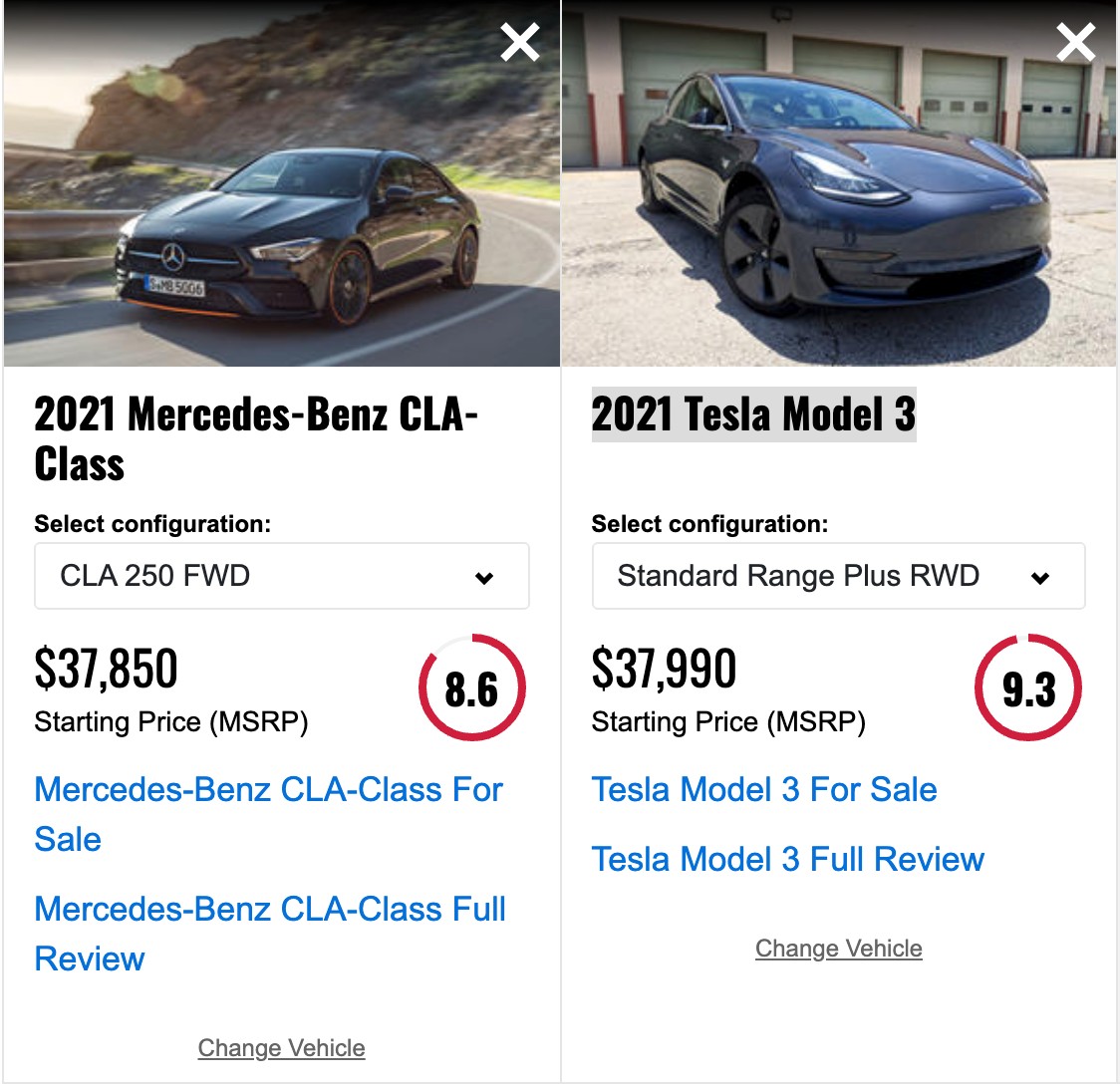
While competitive without the incentive, pricing wouldn’t be close if the $7,000 credit was applied. That would bring the Model 3 to just under $31,000. Additionally, the CLA only gets 25 MPG City and 35 MPG highway. With spiking gas prices, that would be a considerably frequent trip to the local Shell station. The Model 3 gets 263 miles per charge and can be charged from home or at a local Supercharger for a fraction of the price.
This is just one example of where the $7,000 credit would make EVs more appealing than gas cars to those who remain on the fence. Price parity is becoming an outdated argument, and with Tesla’s battery advancements and increased production rates, cars will only become less-expensive every year. Soon enough, Tesla’s $25k mass-market vehicle will hit the roads, and there will be an overwhelming sense of demand from new car buyers. The initial 600,000 EVs will likely disappear as fast as turkey on Thanksgiving, making the tax credit obsolete in virtually no time.
The only real concern that could arise from the new credit is it is likely to increase demand significantly, which could bring issues for Tesla’s projects that have been delayed due to battery constraints. I don’t know how more 3 and Y purchases, along with S and X, would affect Roadster, Semi, or Cybertruck production. However, Tesla is battery constrained, and available cells would likely be subjected to the S3XY lineup, which could further delay the other projects.
Demand is never a bad thing, though. The higher sales of its mass-market vehicles would give Tesla even more capital to invest in battery manufacturing and tech. It would give them more money to source cells from third-party suppliers. It also would only help the company’s financials for many quarters to come. But battery shortages have halted the Semi and Roadster project several times, and the Cybertruck now seems like it could be subjected to the same issues. It seems like Musk could have been hinting toward that in the podcast with Rogan yesterday, where he said that they can “hopefully” begin volume production next year. During the Q4 EC, Musk also said:
“If we get lucky, we’ll be able to do a few deliveries toward the end of this year, but I expect volume production to be in 2022.”
Let’s hope things continue to expand in a timely fashion, I think the EV incentive and the long list of advantages that EVs have over their ICE competitors will be recognized by everyone who remains in limbo over which power source will “fuel” their next vehicle.
A big thanks to our long-time supporters and new subscribers! Thank you.
I use this newsletter to share my thoughts on what is going on in the Tesla world. If you want to talk to me directly, you can email me or reach me on Twitter. I don’t bite, be sure to reach out!
Elon Musk
X account with 184 followers inadvertently saves US space program amid Musk-Trump row
Needless to say, the X user has far more than 184 followers today after his level-headed feat.
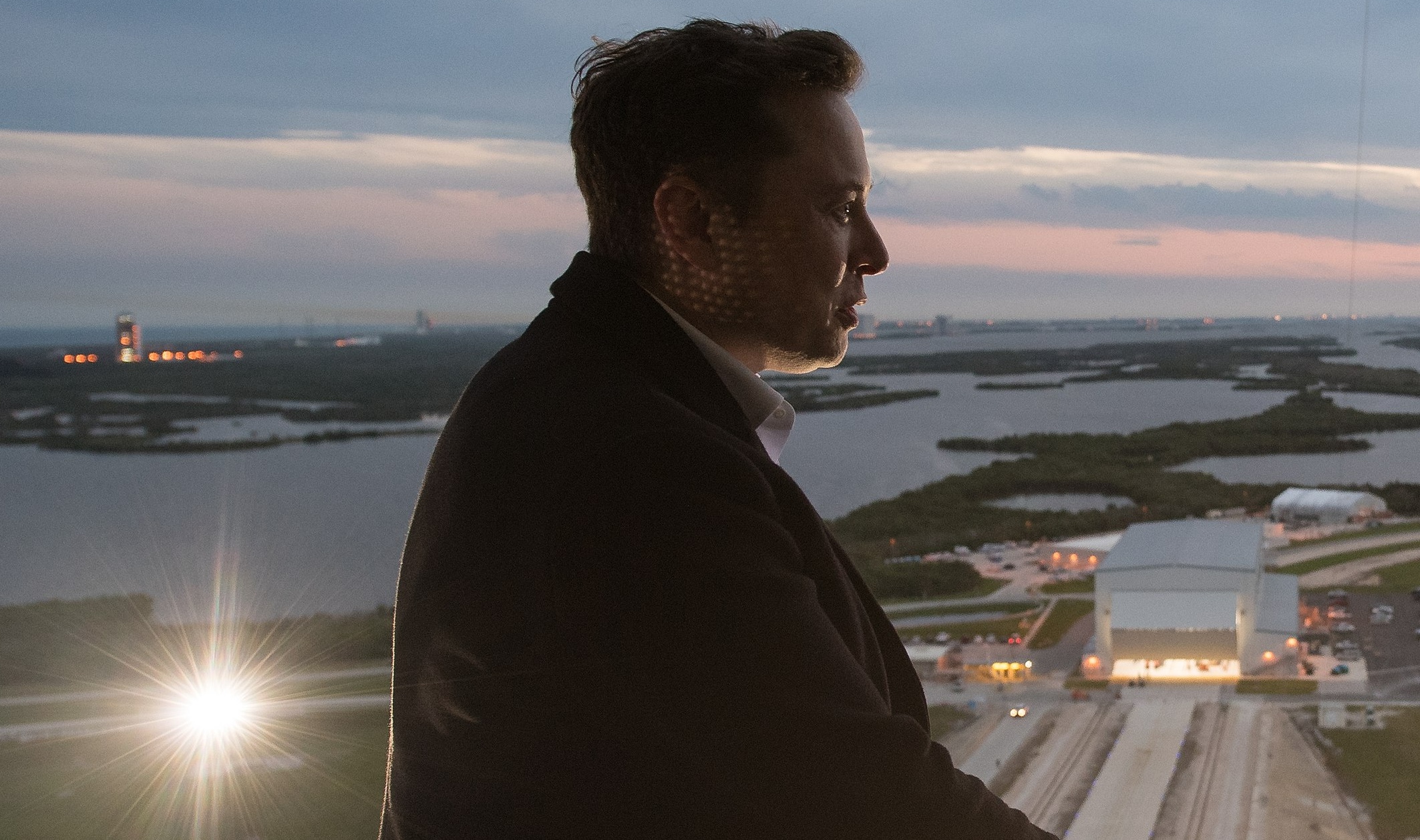
An X user with 184 followers has become the unlikely hero of the United States’ space program by effectively de-escalating a row between SpaceX CEO Elon Musk and President Donald Trump on social media.
Needless to say, the X user has far more than 184 followers today after his level-headed feat.
A Near Fall
During Elon Musk and Donald Trump’s fallout last week, the U.S. President stated in a post on Truth Social that a good way for the United States government to save money would be to terminate subsidies and contracts from the CEO’s companies. Musk responded to Trump’s post by stating that SpaceX will start decommissioning its Dragon spacecraft immediately.
Musk’s comment was received with shock among the space community, partly because the U.S. space program is currently reliant on SpaceX to send supplies and astronauts to the International Space Station (ISS). Without Dragon, the United States will likely have to utilize Russia’s Soyuz for the same services—at a significantly higher price.
X User to the Rescue
It was evident among X users that Musk’s comments about Dragon being decommissioned were posted while emotions were high. It was then no surprise that an X account with 184 followers, @Fab25june, commented on Musk’s post, urging the CEO to rethink his decision. “This is a shame this back and forth. You are both better than this. Cool off and take a step back for a couple days,” the X user wrote in a reply.
Much to the social media platform’s surprise, Musk responded to the user. Even more surprising, the CEO stated that SpaceX would not be decommissioning Dragon after all. “Good advice. Ok, we won’t decommission Dragon,” Musk wrote in a post on X.
Not Planned, But Welcomed
The X user’s comment and Musk’s response were received extremely well by social media users, many of whom noted that @Fab25june’s X comment effectively saved the U.S. space program. In a follow-up comment, the X user, who has over 9,100 followers as of writing, stated that he did not really plan on being a mediator between Musk and Trump.
“Elon Musk replied to me. Somehow, I became the accidental peace broker between two billionaires. I didn’t plan this. I was just being me. Two great minds can do wonders. Sometimes, all it takes is a breather. Grateful for every like, DM, and new follow. Life’s weird. The internet’s weirder. Let’s ride. (Manifesting peace… and maybe a Model Y.)” the X user wrote.
Lifestyle
Tesla Cybertruck takes a bump from epic failing Dodge Charger
The Cybertruck seemed unharmed by the charging Charger.
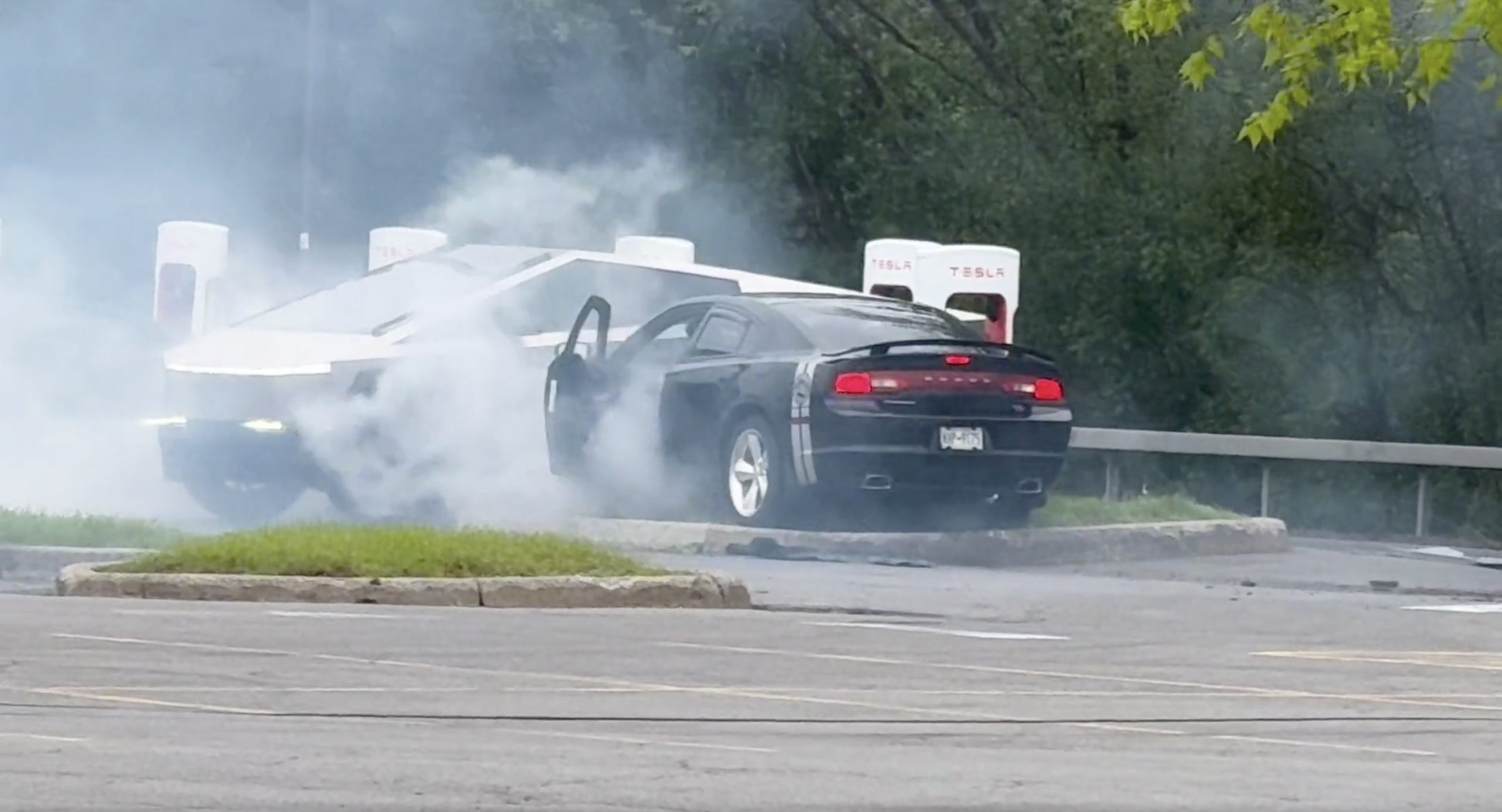
There comes a time in a driver’s life when one is faced with one’s limitations. For the driver of a Dodge Charger, this time came when he lost control and crashed into a Tesla Cybertruck–an absolute epic fail.
A video of the rather unfortunate incident was shared on the r/TeslaLounge subreddit.
Charging Charger Fails
As could be seen in the video, which was posted on the subreddit by Model Y owner u/Hammer_of_something, a group of teens in a Dodge Charger decided to do some burnouts at a Tesla Supercharger. Unfortunately, the driver of the Charger failed in his burnout or donut attempt, resulting in the mopar sedan going over a curb and bumping a charging Cybertruck.
Ironically, the Dodge Charger seemed to have been parked at a Supercharger stall before its driver decided to perform the failed stunt. This suggests that the vehicle was likely ICE-ing a charging stall before it had its epic fail moment. Amusingly enough, the subreddit member noted that the Cybertruck did not seem like it took any damage at all despite its bump. The Charger, however, seemed like it ran into some trouble after crashing into the truck.
Alleged Aftermath
As per the the r/TeslaLounge subreddit member, the Cybertruck owner came rushing out to his vehicle after the Dodge Charger crashed into it. The Model Y owner then sent over the full video of the incident, which clearly showed the Charger attempting a burnout, failing, and bumping into the Cybertruck. The Cybertruck owner likely appreciated the video, in part because it showed the driver of the Dodge Charger absolutely freaking out after the incident.
The Cybertruck is not an impregnable vehicle, but it can take bumps pretty well thanks to its thick stainless steel body. Based on this video, it appears that the Cybertruck can even take bumps from a charging Charger, all while chilling and charging at a Supercharger. As for the teens in the Dodge, they likely had to provide a long explanation to authorities after the incident, since the cops were called to the location.
Lifestyle
Anti-Elon Musk group crushes Tesla Model 3 with Sherman tank–with unexpected results
Ironically enough, the group’s video ended up highlighting something very positive for Tesla.

Anti-Elon Musk protesters and critics tend to show their disdain for the CEO in various ways, but a recent video from political action group Led By Donkeys definitely takes the cake when it comes to creativity.
Ironially enough, the group’s video also ended up highlighting something very positive for Tesla.
Tank vs. Tesla
In its video, Led By Donkeys featured Ken Turner, a 98-year-old veteran who served in the British army during World War II. The veteran stated that Elon Musk, the richest man in the world, is “using his immense power to support the far-right in Europe, and his money comes from Tesla cars.”
He also noted that he had a message for the Tesla CEO: “We’ve crushed fascism before and we’ll crush it again.” To emphasize his point, the veteran proceeded to drive a Sherman tank over a blue Tesla Model 3 sedan, which, of course, had a plate that read “Fascism.”
The heavy tank crushed the Model 3’s glass roof and windows, much to the delight of Led By Donkeys’ commenters on its official YouTube channel. But at the end of it all, the aftermath of the anti-Elon Musk demonstration ended up showcasing something positive for the electric vehicle maker.
Tesla Model 3 Tanks the Tank?
As could be seen from the wreckage of the Tesla Model 3 after its Sherman encounter, only the glass roof and windows of the all-electric sedan were crushed. Looking at the wreckage of the Model 3, it seemed like its doors could still be opened, and everything on its lower section looked intact.
Considering that a standard M4 Sherman weighs about 66,800 to 84,000 pounds, the Model 3 actually weathered the tank’s assault really well. Granted, the vehicle’s suspension height before the political action group’s demonstration suggests that the Model 3’s high voltage battery had been removed beforehand. But even if it hadn’t been taken off, it seemed like the vehicle’s battery would have survived the heavy ordeal without much incident.
This was highlighted in comments from users on social media platform X, many of whom noted that a person in the Model 3 could very well have survived the ordeal with the Sherman. And that, ultimately, just speaks to the safety of Tesla’s vehicles. There is a reason why Teslas consistently rank among the safest cars on the road, after all.
-

 Elon Musk2 weeks ago
Elon Musk2 weeks agoTesla investors will be shocked by Jim Cramer’s latest assessment
-

 Elon Musk1 day ago
Elon Musk1 day agoxAI launches Grok 4 with new $300/month SuperGrok Heavy subscription
-

 Elon Musk4 days ago
Elon Musk4 days agoElon Musk confirms Grok 4 launch on July 9 with livestream event
-

 News1 week ago
News1 week agoTesla Model 3 ranks as the safest new car in Europe for 2025, per Euro NCAP tests
-

 Elon Musk2 weeks ago
Elon Musk2 weeks agoA Tesla just delivered itself to a customer autonomously, Elon Musk confirms
-

 Elon Musk1 week ago
Elon Musk1 week agoxAI’s Memphis data center receives air permit despite community criticism
-

 News2 weeks ago
News2 weeks agoXiaomi CEO congratulates Tesla on first FSD delivery: “We have to continue learning!”
-

 News2 weeks ago
News2 weeks agoTesla sees explosive sales growth in UK, Spain, and Netherlands in June


